(i) Air (density=ρ) flows through a horizontal venturi tube that discharges to the atmosphere. The area of cross section of the tube is A1 and at the constriction it is A2. The constriction is connected to a water (density=ρ0) tank through a vertical pipe of lenght H. Find the volume flow rate (Q) of the air through tube that is needed to just draw the water into the tube.
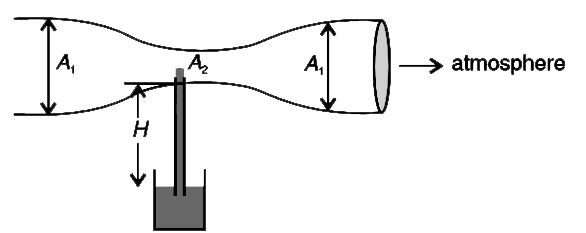
(ii) A non viscous liquid of constant density ρ flows in a stremline motion along a tube of variable cross section. The tube is kept inclined in the vertical plane as shown in the figure. The area of cross section of the tube at two points P and Q at heights of h1 and h2 are respectively A1 and A2. The velocity of the liquid at point P is v. Find the work done on a small volume ΔV of fluid by the neighbouring fluid as the small volume moves from P to Q.
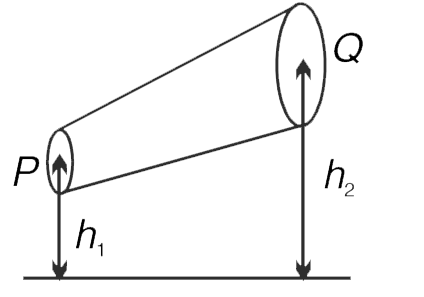
The correct Answer is:(i) Q=
⎷2ρ0gHρ[1A22−1A21]−1
(ii) 12ρΔV(A21A22−1)v21+ρΔVg(h2−h1)
Step by step video, text & image solution for (i) Air (density=rho) flows through a horizontal venturi tube that discharges to the atmosphere. The area of cross section of the tube is A_(1) and at the constriction it is A_(2). The constriction is connected to a water (density=rho_(0)) tank through a vertical pipe of lenght H. Find the volume flow rate (Q) of the air through tube that is needed to just draw the water into the tube. (ii) A non viscous liquid of constant density rho flows in a stremline motion along a tube of variable cross section. The tube is kept inclined in the vertical plane as shown in the figure. The area of cross section of the tube at two points P and Q at heights of h_(1) and h_(2) are respectively A_(1) and A_(2). The velocity of the liquid at point P is v. Find the work done on a small volume DeltaV of fluid by the neighbouring fluid as the small volume moves from P to Q. by Physics experts to help you in doubts & scoring excellent marks in Class 11 exams.
Topper's Solved these Questions
Similar Questions
Water flows through the tube shown in figure. The areas of cross section of the wide and the narrow portions of the tube are 5cm2and2cm2 respectively. The rate of flow of water through the tube is 500cm3s−1 . Find the difference of mercury levels in the U-tube.
 View Solution
View SolutionWater flows through the tubes shown in figure. The areas of cross-section of the wide and the narrow portions of the tube are 5cm2 and 2cm2 respectively. The rate of flow of water through the tube is 500cm3/s. Find the difference of mercury levels in the U-tube.
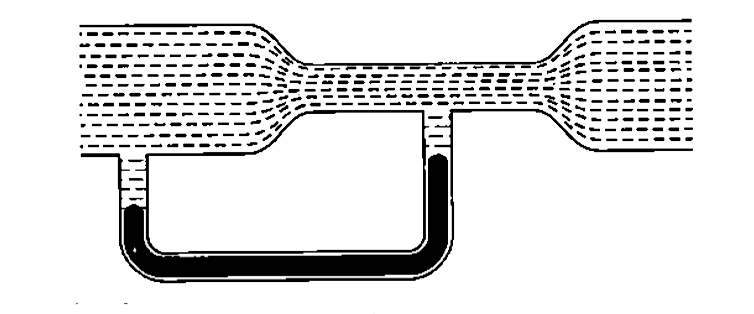 View Solution
View Solution
Knowledge Check
- Question 1 - Select One
Water flowing through a horizontal pipe line having a constriction. Then,
Apressure will be the same througghlut the length of the pipe.Bpressure will be greater at the constiction.Cpressuce will be smaller in the wider portion.Dpressure will smaller at the constriction. - Question 2 - Select One or More
A liquid of density ρ comes out with a velocity v from a horizontal tube of area of cross-section A. The reaction force exerted by the liquid on the tube is F :
AF∝vBF∝v2CF∝ADF∝ρ - Question 3 - Select One
The rate of flow of a liquid through a capillary tube is
Adirectly proportional to the length of tube.Binversely proportional to the difference of pressure between the ends of the tube.Cdirectly proportional to the 4th power of the radius of the tube.Dindependent of the nature of the liquid.
The figure bwlow indicates flow of water through a tube of uniform cross-section with a constant speed in the direction as shown by the arrows. On the tube, water exerts
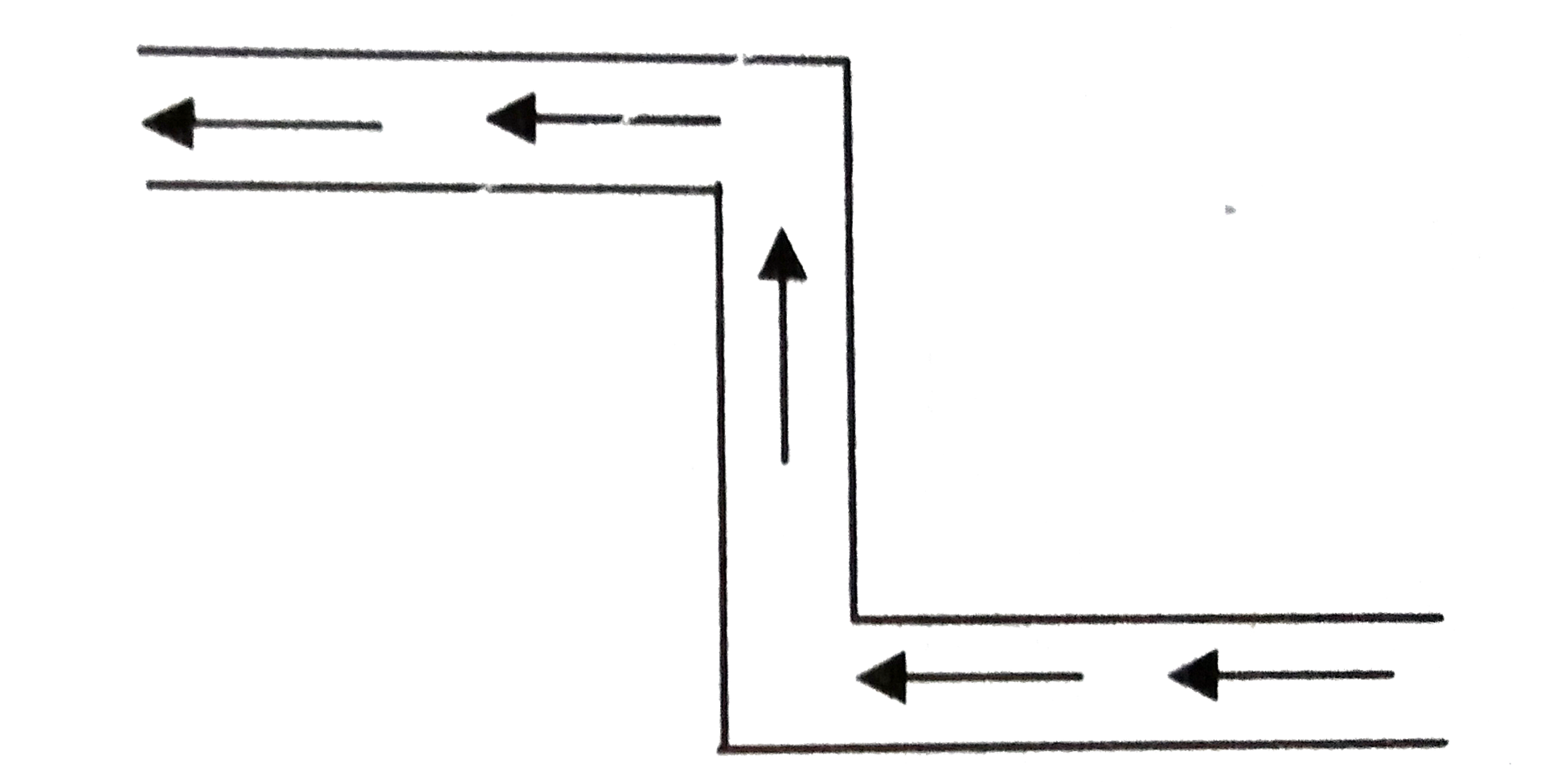 View Solution
View Solution_S01_083_Q01.png)
Water (density ρ) is flowing through the uniform tube of cross-sectional area A with a constant speed v as shown in the figure. Find the magnitude of force exerted by the water on the curved corner of the tube is (neglect viscous forces)View SolutionA liquid of density ρ comes out with a velocity v from a horizontal tube of area of cross-section A. The reaction force exerted by the liquid on the tube is F. Choose the incorrect option.
View SolutionA liquid flows through a horizontal tube as shown in figure. The velocities of the liquid in the two sections, which have areas of cross-section A1 and A2 and v1 and v2 respectively. The difference in the levels of the liquid in the two vertical tubes is h, then
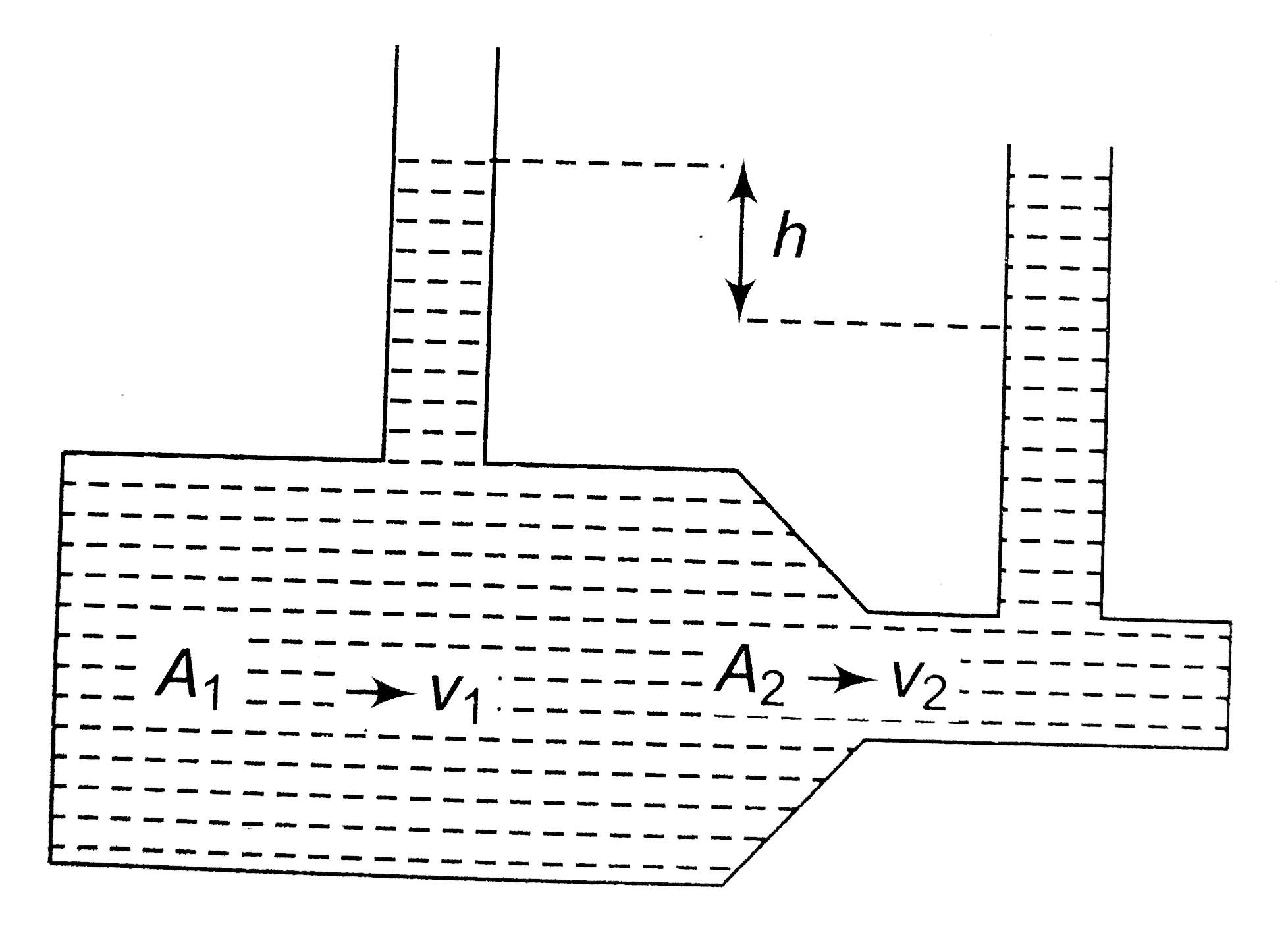 View Solution
View SolutionA capillary tube of area of cross-section A is dipped in water veritcally. Calculate the amount of heat evolved as the water rises in the capillary tunbe upto height h. The density of water is ρ
View Solution

